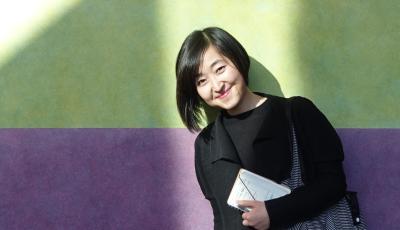It might seem like a giant leap from Inner Mongolia to Pittsburgh, but Yao made a few stops along the way. The first was Zhejiang University in Hangzhou, where she enrolled in medical school. After two years, she realized she was better suited to a profession that allowed for more expression and exploration.
"I learned that I prefer creativity over reciting knowledge written in medical books," she said. "As a person who deals with creative technologies and exploration, you can be highly productive even if you are young and inexperienced, as long as you are passionate."
That passion propelled her to a bachelor's degree in engineering and industrial design in China, and then to MIT Media Lab, where she earned her master's and Ph.D. in media arts and science. This past June, she joined the HCII, whose advertisement for a "radical designer" who could also do research caught her attention in a big way. Because "radical" might be the best adjective to describe Yao's work.
Take, for example, the aforementioned flat pasta. Begun while she was finishing her Ph.D. in Media Lab with colleagues Wen Wang, Chin-Yi Cheng and Professor Hiroshi Ishii, the "Transformative Appetite" project generates 2-D films from food materials (protein, cellulose or starch) that transform into 3-D shapes when they're boiled. At the cellular level, the film material is designed to swell when it encounters water, but also contains molecular elements that help limit and control the swelling, resulting in the desired "pasta" shape. While early prototypes used gelatin as a primary base, Yao has reached out to Barilla since arriving at CMU and formed a partnership to create a substance that tastes more like real pasta.


